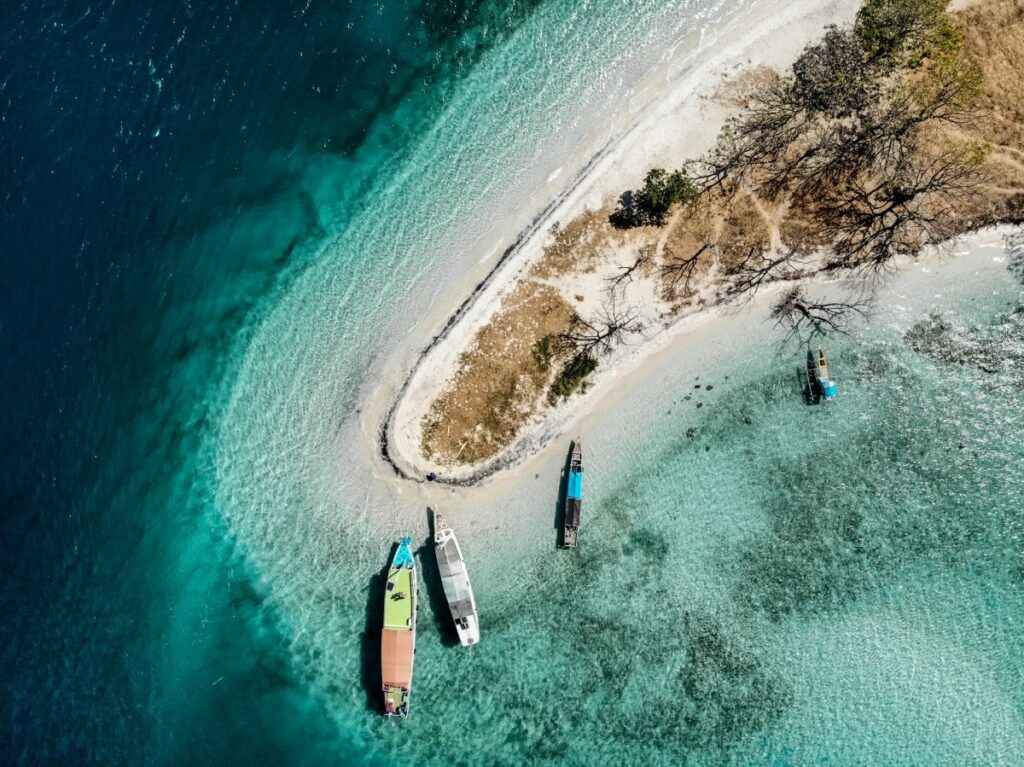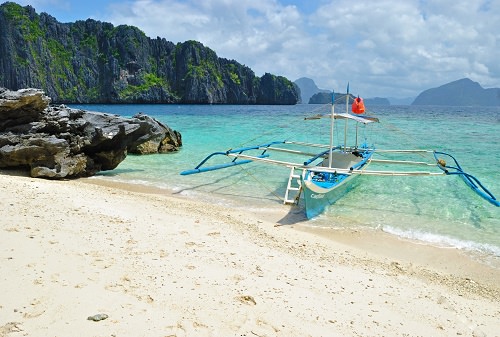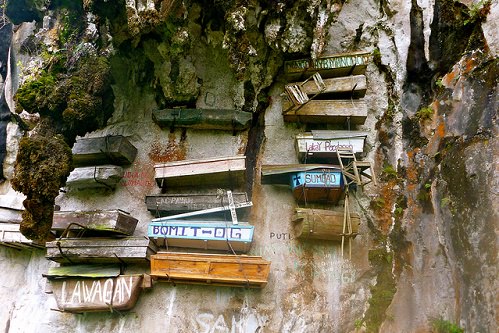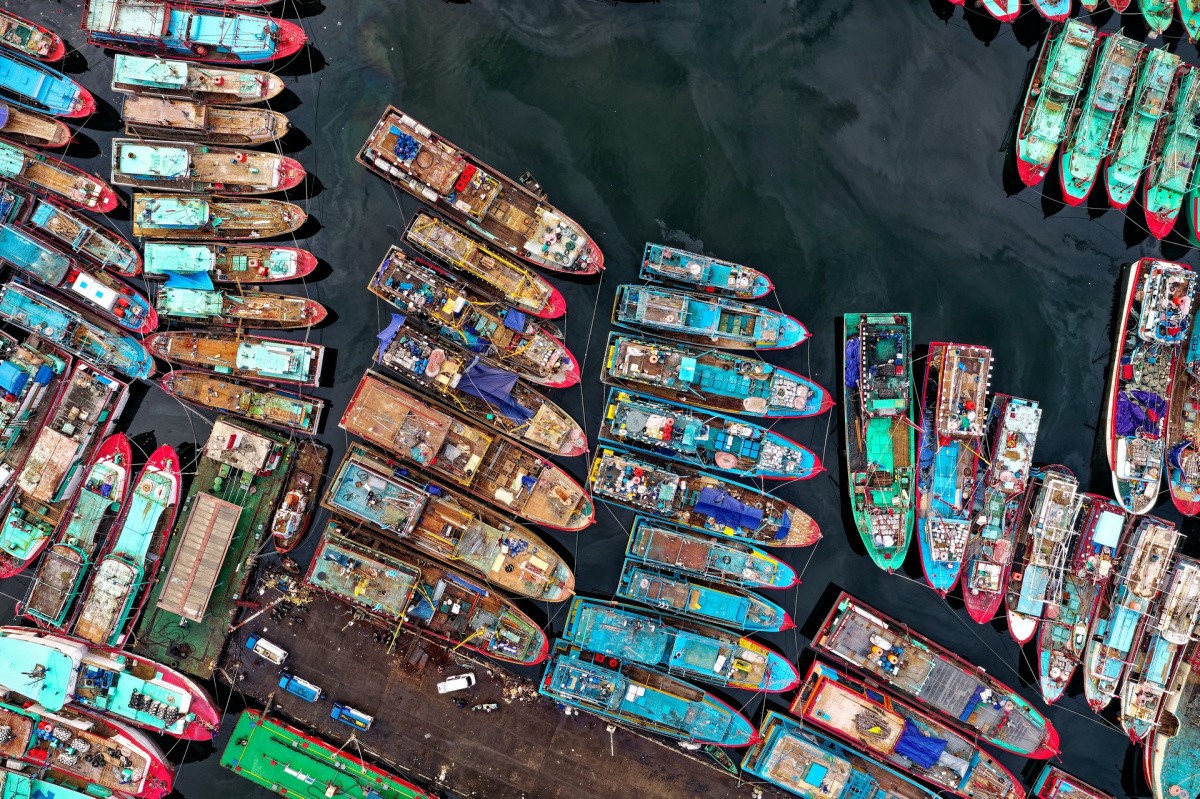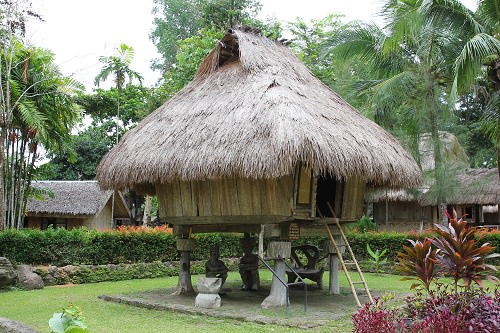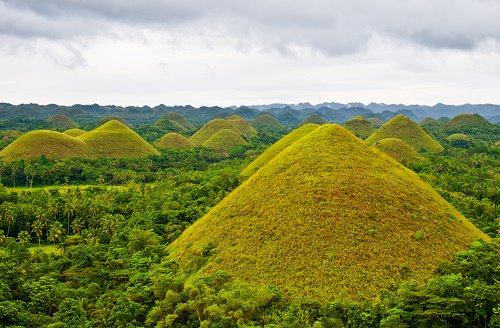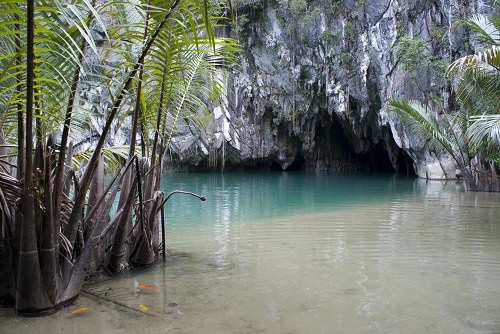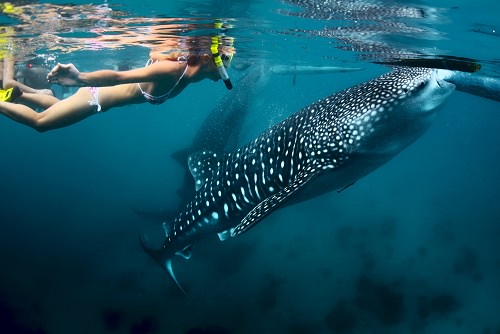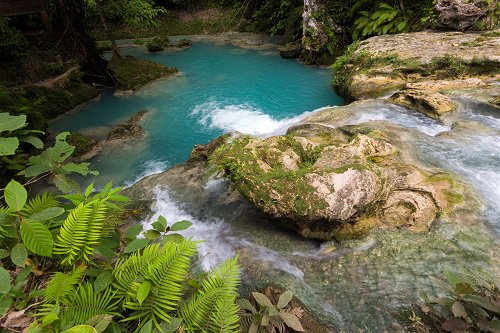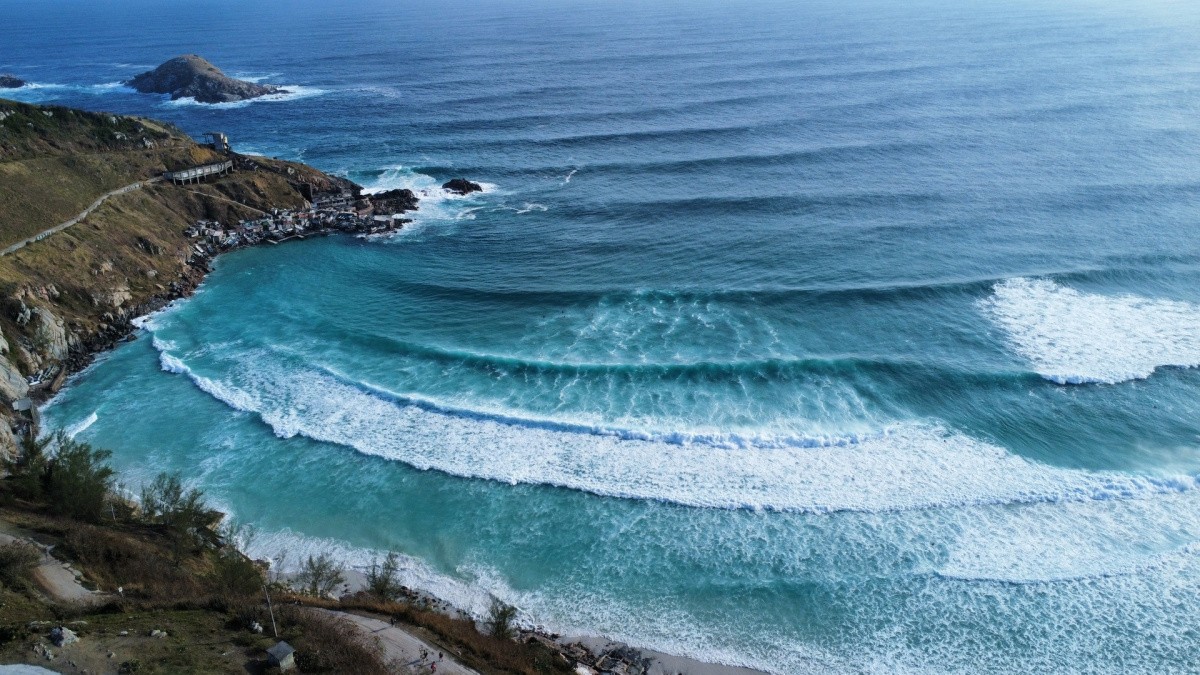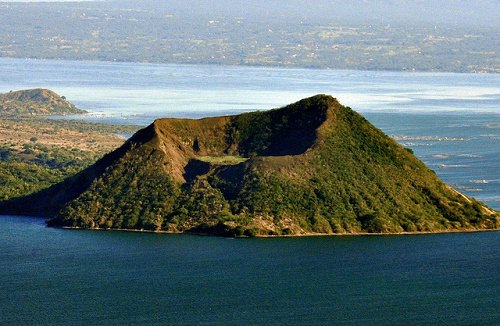If your modest backpacker’s budget won’t get you as far as Hawaii, the Philippines is an often-overlooked Asian destination of indescribable beauty that deserves your attention. The archipelago of 7000 islands is so full of natural wonders that you can spend a lifetime exploring them. If you find yourself in the Philippines with a backpack, here’s where you should go.
1. Go island-hopping at the Bacuit Archipelago
While Vietnam’s Halong is spectacular in brochure pictures, it’s overrun with tourists. If you’re hopeful of great natural beauty that you get to explore by yourself, the peaceful islands of the Bacuit Archipelago north of Palawan should be at the top of the backpacking Philippines list.
It’s one of the few tropical paradises on earth where you still get to find secret, undiscovered beaches that you can call your own. For the sake of boat tours, travelers overcome the difficult path to El Nido. You will have the unique opportunity to explore the many islets of the Bacuit Archipelago on a boat tour where the water is so clear you can see fish swimming between the corals at a depth of 15 meters.
In addition, looking around the islands of the Bacuit archipelago, you will undoubtedly be amazed by the lagoons, ancient caves with mysterious stone figures, and huge limestone rocks whose age is 250 million years. This region is an excellent place for snorkeling and diving. As a result, this tourist destination is one of the best for backpacking the Philippines.
How to get to El-Nido?
Local airlines fly directly to the capital of Palawan, Puerto Princesa. From the city’s main bus station, you can take the seven-hour Roll-On Roll-Off bus to El Nido.
2. See the Hanging Coffins of Echo Valley
Photo: Rick McCharles
Backpackers will notice that the mountainous territory of Northern Luzon is different from anything that other parts of the country have to offer. As you walk up the mountain paths, the equatorial heat of the plains drops away to be replaced by cool, pine-scented air reminiscent of European spring. Echo Valley, known for its echoey mountain areas, is easily reached on foot.
The local tradition of putting their dead to rest in colorful coffins hung off the sides of mountains makes for an interesting sight. Hanging coffins in the Echo Valley, Sagada, are “reserved” mainly for Igorot elders and their families because it is believed that the younger generations will be able to receive spiritual enlightenment after a successful “burial”. Hanging coffins and echoes in the valley create a mysterious and slightly creepy atmosphere.
How to get to the Echo Valley?
You should pass the Cathedral of San Mario to get to the Echo Valley. From the top to the hanging coffins is a 15-20 minute walk.
3. Port Barton
Another backpacking destination is Port Barton, a small town located 145 kilometers from the capital of Palawan, Puerto Princesa. This is one of the most exciting and colorful places in the Philippines. This corner attracts tourists with inexpensive recreation, remoteness from big cities, and the sparsely populated territory of the western tip of the island.
The main attractions of Port Barton for Philippines backpack travelers are the beautiful beaches, the nearby islands, the colorful corals, the picturesque waterfalls, and the magical silence that draws people to a place so remote, so untouched, and so beautiful. The town remains untouched in its pristine purity, the charm of a certain primitiveness of life, which gives it its unique charm. Tourists love Port Barton precisely for the opportunity to forget about all the problems and troubles of the modern world.
Another natural treasure is the Port Barton Marine Park, a protected marine reserve. The marine park includes twelve islands ideal for boat tours, swimming, and snorkeling. In addition, port Barton is an ideal and inexpensive place to learn to dive in Palawan, as the waters are rich in colorful coral and various marine life. All this makes Port Barton a perfect place for solitude seekers during their Philippines backpack trip.
How to get to Port Barton?
The best way to get to the town of Port Barton is by a regular bus that leaves San Jose Station in the capital of Puerto Princesa island every day.
4. Ifugao, a UNESCO World Heritage Site
The village of Ifugao in Northern Luzon can only be reached through a long track. The reward is spectacular – a gentle slope of rice terraces in the middle of high mountains. It’s a site so impressive that UNESCO has counted it worthy of world heritage site recognition.
The village is known for its Banaue Rice Terraces, which have become one of the country’s top tourist attractions. They were created by the ancient Ifugao people over two thousand years ago. As in ancient times, these terraces are important to the locals.
In addition, the Ifugao tribe is distinguished by the special architecture of their wooden houses on chicken legs. Their roof is made of straw as if the house was covered with a haystack.
How to get to the Ifugao province?
The province is located 350 km north of the country’s capital Manila. The more convenient way to get there is by bus or rental car. However, it is best to use a ready-made excursion package if you want to save money. As part of an organized excursion from Manila, it will take a minimum of time to explore the village without additional transfer costs.
5. The Chocolate Hills of Bohol
Being one of the best Philippines backpacking destinations, the Chocolate Hills National Monument is a geological curiosity in the Bohol district of the Visayas region, a collection of 75 or so islands. The national park is famous for its hundreds of strange, cartoon-like hills with symmetrical little slopes rising no more than 100 m or so out of completely flat earth.
The term Chocolate Hills comes from the appearance of the hills from a distance – that of a large tray of chocolate kisses. However, initially, this landmark of the Philippines was called Carmen Hills after the name of the area in which they are located. And they acquire a chocolate shade only from February to May, when the grass on the slopes dries up and gives the same chocolate charm to this area.
How to get to the Chocolate Hills?
It is best for backpacking in the Philippines to use a tourist trip to Bohol, organized by a travel agency. It will allow you to get acquainted with the Philippine natural monument. Additionally, you can get there by ferry from Cebu.
Read also – Top 10 Great Vegetarian Restaurants in the Philippines
6. The Puerto Princesa Subterranean River
Puerto Princesa is a great spot for backpacking in Philippines. It is a national park in Sabang, Palawan, some 15 miles from the city of the same name. Chosen as one of the New 7 Wonders of Nature in 2012, the highlight of the park is its Subterranean River.
It is a river whose course takes it entirely along unbroken stretches of caves over great distances. You can explore the mysterious river on guided boat tours and get within hearing range of underground waterfalls. Untouched nature, a silent river that leads far into the unknown, and a cave with its incredibly shaped stalactites and stalagmites – all this is remembered for a long time and will not leave anyone indifferent.
How to get to the Puerto Princesa Subterranean River?
The starting point for the underground river is the small village of Sabang. Sabang is located about 40 km north of the island’s capital, also called Puerto Princesa. You can book a day trip from the capital or stay in Sabang.
7. Go swimming with whale sharks
Whale sharks are most often sighted in Oslob in Cebu and Donsol in Southeast Luzon. Despite its scary name and size, the giant whale shark is a gentle creature that eats nothing but plankton. A short day trip on a boat out to sea is all it takes to go snorkeling with one of these spectacular creatures.
These giant ocean inhabitants reach up to 20 m in length and are completely safe for humans, as they feed exclusively on plankton. Sharks swim close to divers, so taking unique photos and videos is easy. To swim with sharks, you will need a mask, snorkel, fins, and a small fee for renting a boat with a rower.
Impressions are enormous and indescribable. This is really what you need to do when you come to the Philippines.
How to get to Oslob?
Getting to Oslob is very easy. You can take a bus from Cebu. The road takes about 3-4 hours, depending on traffic jams. But if you prefer backpacking in the Philippines, it is best to go on an organized tour and not worry about public transport or a rented car. You will be brought, waited, and taken in a comfortable minivan.
Read also – 10 Must-See Places in the World
8. Surigao
Surigao del Sur is a district on Mindanao island, a part of the Philippines with incredible natural beauty. It is well-known due to its crystal clear waters and powdery white sand beaches. The Enchanted River and the Tinuy-Ann waterfalls are some of the most beautiful sights in the Philippines.
The Enchanted River is one of the most incredible natural places of interest and the most mysterious river in the Philippines, where locals believe that creatures such as fairies, pixies, and mermaids live. The amazing beauty and unique charm of the Magic River are described even in poetic form – its motionless blue is mesmerizing.
Tinuy An Waterfall is another exciting tourist destination in the province. It is called the most beautiful multi-tiered waterfall in the Philippines. You can use the bamboo raft to get close to the refreshing cascades.
How to get to Surigao del Sur?
The most convenient way for backpacker Philippines to get to Surigao is to take an overnight ferry from Cebu. Ferries run daily.
9. Camiguin Island
Another great destination for backpacking in the Philippines is Camiguin Island, a small and quiet province in the Philippines. Camiguin is born from seven volcanoes. This remote but beautiful island of Camiguin owes much of its beauty to its fiery origin.
There are many tourist places that you can visit. Exceptionally diverse flora and fauna, waterfalls, rivers, springs, volcanoes, and geysers are found here.
Camiguin Island is also a popular diving destination. A diverse marine life, bizarre coral reefs grow, and turtles are a real find for lovers of this extremely popular outdoor activity.
How to get to Camiguin?
Daily direct flights connect the southern city of Cebu with Camiguin Airport. In addition, you can go to Camiguin by ferry, which departs from the island of Bohol.
10. Hike up a volcano
Photo: therealbrute
The Philippines is a volcano country – it has dozens of dormant volcanoes on its various islands. Even Manila, the capital, has several close by. You can pick any one to hike up. You may even feel a little volcanic rumble underfoot at times.
One of the most popular destinations for Philippines hiking activity is Taal Volcano. The landscape and atmosphere around Taal Volcano and the lake has distinctive features, which is why tourists are willing to risk their lives to become part of one of the most beautiful and dangerous places in nature. Also, from the top of the volcano, you can catch a stunningly picturesque and breathtaking view of the lake. Hot gasses and ash are often coming out of the volcano’s vent.
With the increase in the number of traveling adventurers, this hiking Philippines area around Taal Volcano has been developed into a tourist destination. Official guided tours run regularly and always keep visitors excited and impressed. Philippines hiking is an excellent choice for budget travel in Philippines.
How to get to Taal Volcano?
First of all, you should get to Talisay by public transport. And then, you can hire a boat to cross Taal Lake and reach Taal Volcano.
Read also – 10 Fabulous Things to Do in Manila
The islands of the Philippines can take a lifetime to explore well. But, with a top-10 list in hand, it can be easy to get a head start. So, what’s your favorite backpacking destination in the Philippines?
Below, we have compiled a list of the most exciting questions about the best backpacking destinations in the Philippines:

